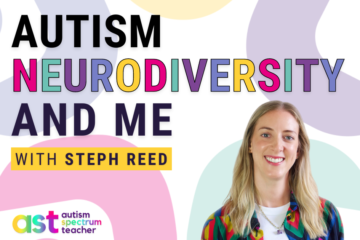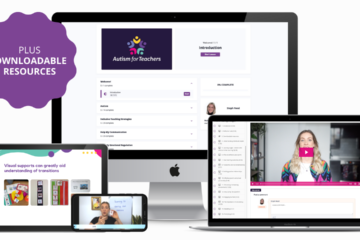Table of Contents
Practical tips
(Grab the free printable handout version below!)
Always show or model to the child what you want him/her to do, when you ask them to do something (do not just tell them)
This will help the child to understand exactly what you want them to do, by seeing it.
Reduce your language to help your child understand
It can help to reduce language or shorten a sentence to the key words, to ensure your child hears the important information. For example, rather than saying “can you put that rubbish in the bin now” instead say “put in the bin” or just “bin”.

Get on the floor or at a table and play with your child doing what they enjoy playing with!
If your child enjoys pushing a train along a track, do this with them! If your child enjoys spinning, join in spinning with them! If your child enjoys building, build with them! Joining in with things that they already enjoy, is a great way to engage and get their attention, because it is something they already enjoy. Model language during this time to demonstrate and teach the vocabulary in context. For example, if jumping together say “jumping, jumping”, or if playing with trains use language around trains i.e. “here comes the train! choo choo”.
Visual Support
Objects, pictures or photos can support a child’s understanding about where they are going and what they are going to do next.
For example, if you want to change their nappy and they are playing, give the child a nappy to hold to help them understand that is where you want to take them. This will help their understanding and the transition to the bathroom.
Another example is, if you are going to the park, before you go you can show your child a photo of the park and tell them that you are going to the park. This will help their understanding of where they are going.
Consistency
Being consistent over time with routines and boundaries will help the child understand what to do and what is expected. If you say one thing one day, i.e. “no jumping on the bed” and the next day you let the child jump on the bed, your child will be very confused and this can therefore lead to frustration or distress.
Sensory Needs
A child diagnosed with autism is very likely to have sensory sensitivities and may process the sensory input around them very differently to you. There is what’s known as ‘hypersensitivity’, which is being very sensitive to sensory input, or ‘hyposensitivity’ which is being under sensitive or perhaps not register specific sensory input.
The sensory input in the environment can really have an impact on a child, so be aware of your surroundings and how it may be affecting your child. This includes the lights, visual stimulation, noise, touch, smells and movement. Autistic children can find it difficult to block out different stimuli and therefore find it difficult to concentrate. Removing or reducing stimulation can help. Be aware of things such as different sounds, lights, things on the walls or in the room, sounds of electrical equipment, clothing, food and physical touch.
Food
Introduce new foods, but don’t put pressure on a child to eat if they really protest. Many autistic children have sensory sensitivities and find different textures, smells and tastes very uncomfortable and this can lead to high anxiety around food.
Allow children to explore food with their hands and other senses. This does not necessarily mean at the dinner table, you can do messy play activities with different food types such as cooked pasta, dry cereal or flour at non-eating times. This gives the child time to explore without any pressure of eating.
Intensive Interaction is an approach to developing early communication, interaction and relationships with children with autism and complex needs.
In Intensive Interaction, the child leads an interaction, at their level of communication. They may say words, make noises and movements with their body, which you can imitate and copy to join in with their interaction. Almost like a conversation, but at the child’s level of communication. Here is some further information in this BILD leaflet and examples in a video from Intensive Interaction founder Dave Hewett.
Try this with your child and see how they react. I have made very positive relationships with children at different stages of communication by using Intensive Interaction.
Understanding Behaviour
Behaviour can be communication telling you that something is frustrating or upsetting the child. You might be able to work out what is causing this and other times you might not.
The reason behaind behaviour could be due to:
- a sensory sensitivity or overload,
- something to do with an object or activity and they may not understand (wanting a toy that they can see or the removal of a toy without prior warning)
- for social connection
- to avoid something, someone or to escape a situation
- a medical need such as pain
- anxiety
- trauma
When you know the reason behind a behaviour, you can try to avoid this from happening or think of a supportive strategy (i.e. if a child gets upset because they want the iPad, make sure that the iPad is out of sight until the time they can have the iPad), or give access to the wanted attention/ toy/ communication aid etc. in a controlled and structured way (i.e. if a child is trying to get your attention by jumping on you during a specific activity (i.e. when you are cooking), try to give this attention before the activity i.e. jumping together holding hands first and then cooking. Making this a routine will help define when the child can and can’t do something.
Regulating Emotion
If your child has become so emotionally dysregulated and is very upset and angry, your child will need to calm down before anything else is possible. Being calm yourself will help them calm down enormously. Saying as little as possible may also help, until they are out of the ‘fight, flight, freeze’ response.
Over time, you may find something that helps your child to calm down that can be used at these times (e.g. singing or a specific comforter like a blanket).
It is good to keep a note of what happened before times that the child becomes upset. This will help you to identify any dislikes, patterns or triggers over time.



